Electric Intensity or Electric Field Strength
Visualising Electric FieldsThe intensity of the electric field or the electric field strength can be thought of as the gradient of the field. It is easy for us to visualise the gravitational field, as we are more affected by it. It acts upon our mass - we rarely have a net charge! With gravity, the steeper the gradient of a slope the greater the force acting on an object rolling down it - so the greater the object's acceleration will be. The same is true with the electric field.... you just have to visualise it - electric intensity is effectively the gradient of the electric field. The diagram below shows the shape of the electric field landscape formed by a single positive charge and a single negative charge.
F = ma and F = EQFor a given charge the greater the electric intensity (or electric field strength) the greater the force will be on that charged particle, just as for a mass, the greater its acceleration, the greater the force that must be acting on it. This is expressed in the equation: F = EQ We often have to do calculations on the acceleration of charged particles within an electric field. We therefore have to use the above equation to determine the force acting and then use F=ma to determine the acceleration that will result. Sample Question:
What is the electric field strength (or intensity) at point X?
Using the equation:
The magnitude of E for each of the two vectors is: |E| = (5.0 x 10-6)/(4π x 8.9 x 10-12 x 16) |E|= 2.79 x 103 N/C
From the sketch you can see that horizontally they both have a direction to the right but that they oppose each other vertically. Therefore vertical components cancel each other, but the net electric intensity is double a single horizontal component. so, E = 2 x 2.79 x 103 x cos 60o N/C (to the right) E = 2,800 N/C (to the right) (2 sig figs) Electric Intensity in a Uniform FieldWhen finding the electric field strength between capacitor plates you need to be aware that there is UNIFORM field strength - so the 'd' is the distance between the plates and 'V' is the potential difference between those plates - the intensity is the same at all points between those plates so any acceleration produced will be uniform - as the force produced (and therefore the acceleration of the charged particle) will be constant. Remember that the AQA syllabus likes you to say Vm-1 rather than N/C when dealing with uniform fields. Practical note: 'edge effects' means that near the edge of the plates the uniformity of field is disrupted.
|
Follow me...
|


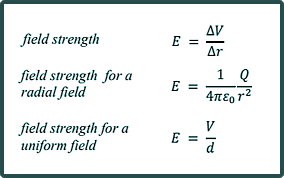
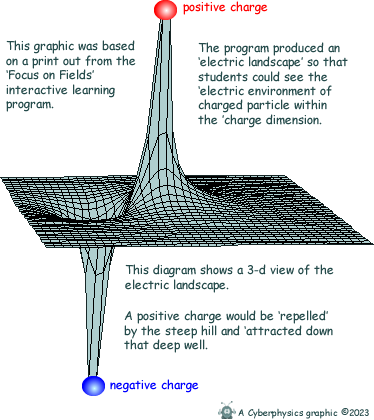
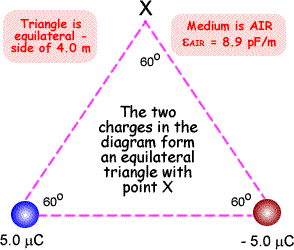

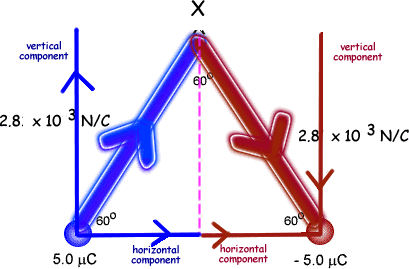
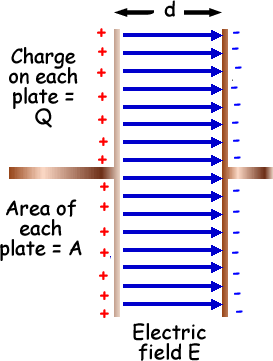
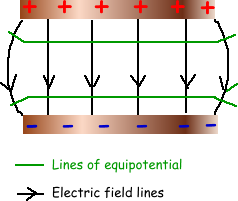
 This is a program I recommend... it gives a wonderful visual representation of Fields.
This is a program I recommend... it gives a wonderful visual representation of Fields.



